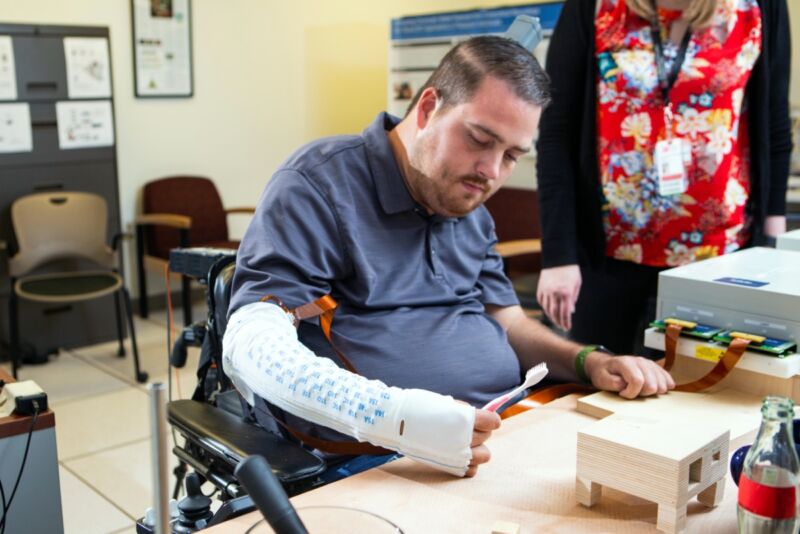BCI system gives paralyzed man back his sense of touch with haptic feedback

Enlarge / Ian Burkhard suffered a severe spinal cord injury in 2010. Battelle's NeuroLife project is restoring motor function to his right arm with a brain-computer-interface system. (credit: Battelle)
Ian Burkhart, now 28, had a diving accident in 2010 that severely damaged his spinal cord, leaving him paralyzed and confined to a wheelchair, with only limited movement in his elbow and shoulders. Thanks to an implanted brain-computer-interface (BCI) developed by Battelle, he has made significant progress over the last six years in restoring small movements; he's even able to play Guitar Hero again. And now Battelle scientists have succeeded in restoring his sense of touch, according to a new paper in the journal Cell.
BCIs are a booming R&D field, with startups like Elon Musk's Neuralink looking ahead to a world where human beings will connect directly to their computers with either external devices (similar in function to an EEG) or biologically compatible implanted BCIs. Such systems require a way to record neural activity (electrode sensors), a way to transmit those signals (like a small wireless chipset), and algorithms that can translate those signals into action. BCIs are already a medical reality for patients with spinal cord injuries, like Burkhart, or those who suffer from Parkinson's or epileptic seizures. The benefits patients gain far outweigh the risks of surgical implantation.
Over the past 90 years or so, Battelle has been instrumental in developing such prominent technologies as the Xerox machine, cruise control, and CD-ROMs, along with numerous medical devices. Patrick Ganzer, lead author on the new Cell paper, is a research scientist with the organization's medical devices division, working with the NeuroLife group to develop a BCI for clinical trial. Burkhart has been working with Ganzer and NeuroLife since 2014 to restore motor function to his right arm.
Read 11 remaining paragraphs | Comments